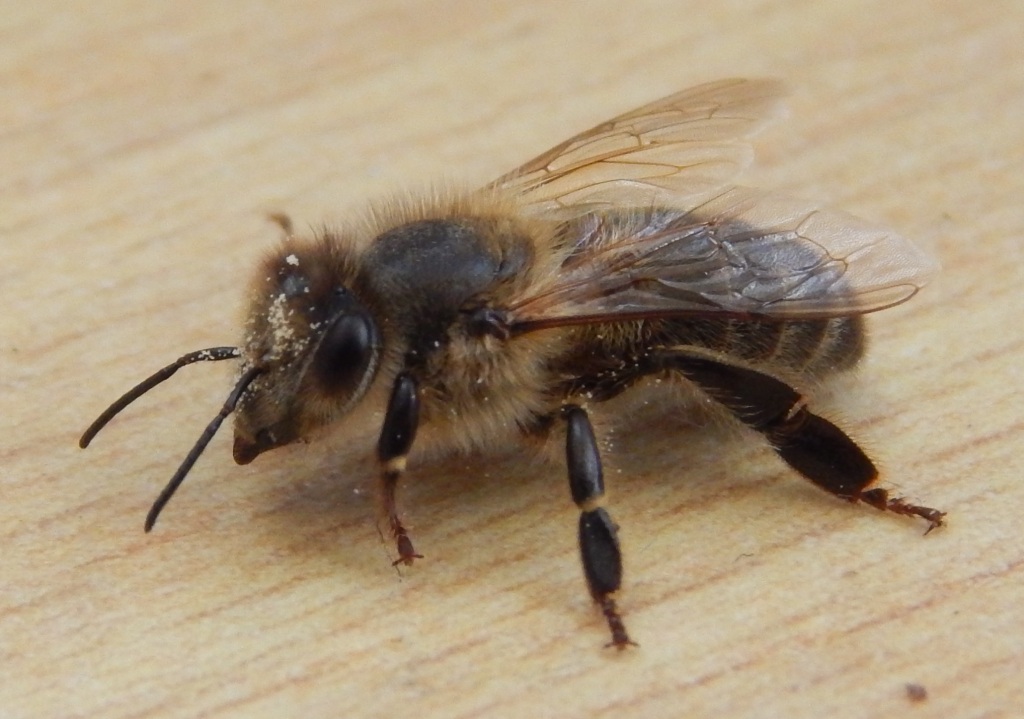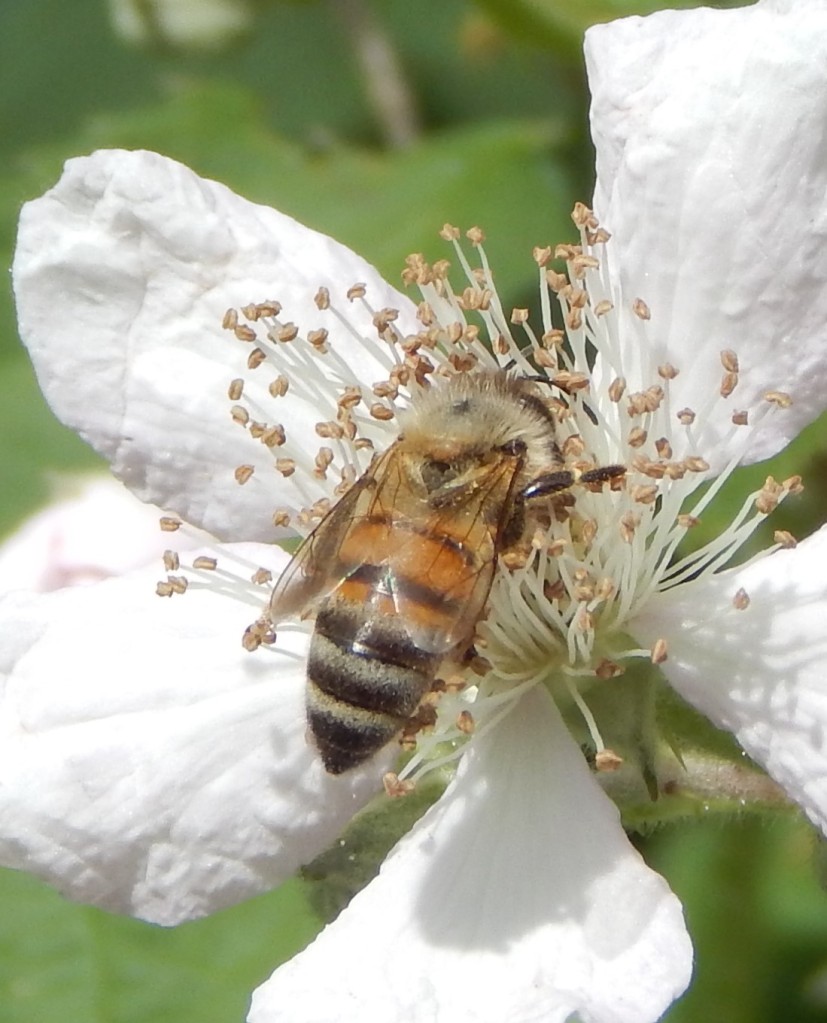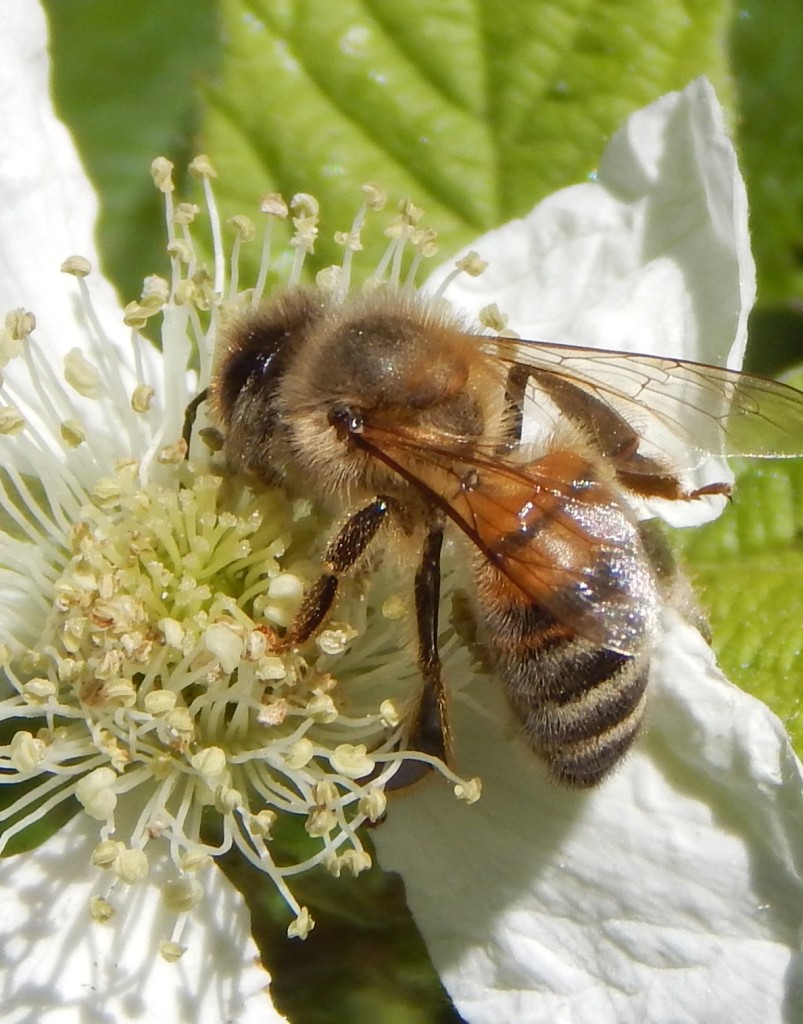
[029] Apis mellifera, Honey Bee
Introduction
Apis mellifera, the Honey Bee is the main well-known bee throughout the World, often effectively domesticated for the production of honey. It may have originated in Africa or Asia but it spread naturally to Europe and has been spread further to the Americas, Australia and almost everywhere by humans.
There are seven other much less significant species of Apis known as honey bees so we have to call Apis mellifera the Eurasian Honey Bee. ‘Honeybee’ for ‘honey bee’ is common but not accepted by entomologists.
Almost everywhere in informal usage it is normally just called a bee.
There is far too much that I could say about honey bees so I will leave out a lot.
Taxonomy
Kingdom – Animals
Phylum – Arthropods
Class – Insects
Order – Hymenoptera
Clade – Anthophila (Bees)
Family – Apidae (Honey Bees, Bumble Bees and many others)
Genus – Apis
Scientific Name – Apis mellifera
Name
I think the word ‘bee’ has always meant this insect.
Apis is the Latin for ‘bee,’ and ‘melli-fera’ means ‘honey-bearing.’
Description
We all know what bees look like and what they do. The colouring and the banding on the body vary geographically. They collect nectar and pollen; make honey with the nectar; and help to pollinate plants by transferring the pollen to other flowers.
They can sting but rarely do so. Only the workers can sting as the sting mechanism is a modification to the ovipositor.




Reproduction and castes
For today’s lesson, I want to talk first about haplodiploidy, the system that determines the sex of Apis mellifera and all bees, wasps and ants. It is best summed up in the statement that: ‘a male has no father and cannot have sons, but he has a grandfather and can have grandsons.’
Basically, all males have one set of chromosomes (haploid) and all females have two sets (diploid.) When the queen produces eggs. they have only one set (haploid) and they can develop without fertilization into haploid (male) drones.
But when the queen mates, she stores a large amount of sperm for continued use and then starts to produce fertilized eggs. These combine her chromosomes with those from the sperm to produce diploid (female) offspring as workers.
As I am sure you know, Honey bees live as a permanent colony in a hive with a single Queen, who lays all the eggs, and large numbers of workers. The Workers are all females but infertile. A bee can only become a queen if she is fed the right diet as a young larva and the workers generally make sure that no new queens develop.
When a new queen is needed and emerges, she flies to a point where she mates several times with male Drones. She stores enough sperm to last her for life. The males, who cannot collect pollen or nectar, die immediately after mating.
Within a hive, the workers construct cells in which the queen lays her eggs. They look after the new bees and make and store honey.

Domestication and Beekeeping
Bees are almost the only invertebrate animal to be domesticated and people have been beekeeping for thousands of years. [When I found that statement on Wikipedia, I had to think what others there are. I can only think of the silkworm].
It is arguable whether bees are truly domesticated as beekeepers do little more than housing them, but they have certainly been selectively bred to be less aggressive and to produce more honey.
Colonies of bees are also kept specifically to pollinate crops. Beeswax, used by the bees to construct the honeycomb cells in the hive, is harvested for use in candles.
Other Notes
If you want to know more about bees or beekeeping there are lots of books available.
Honey bees must be the easiest insect to find. If you see bees flying between flowers as they collect pollen, they are probably Honey Bees or Bumble Bees.
See also
Their closest relatives are [052] Bumble Bees.
